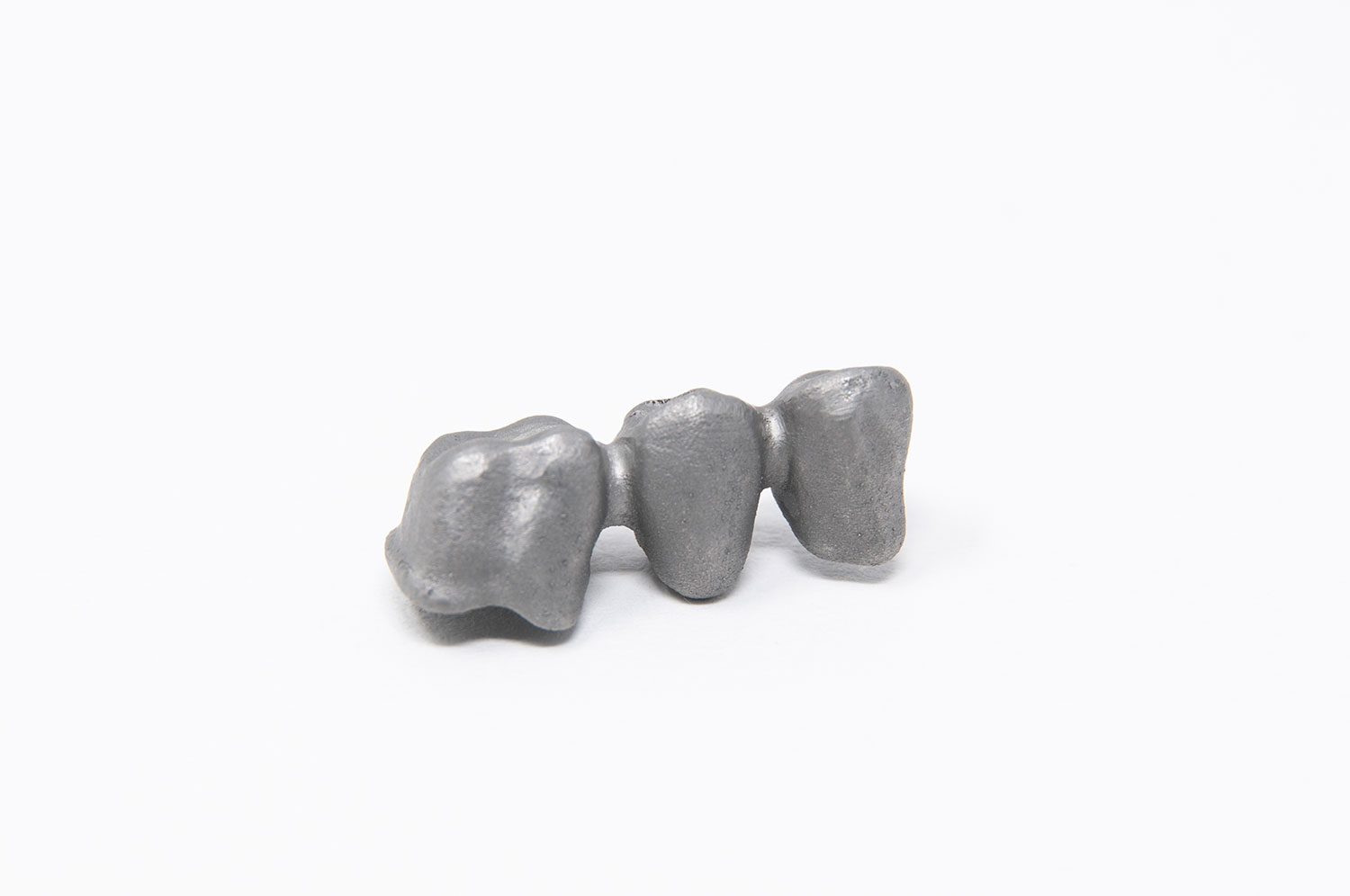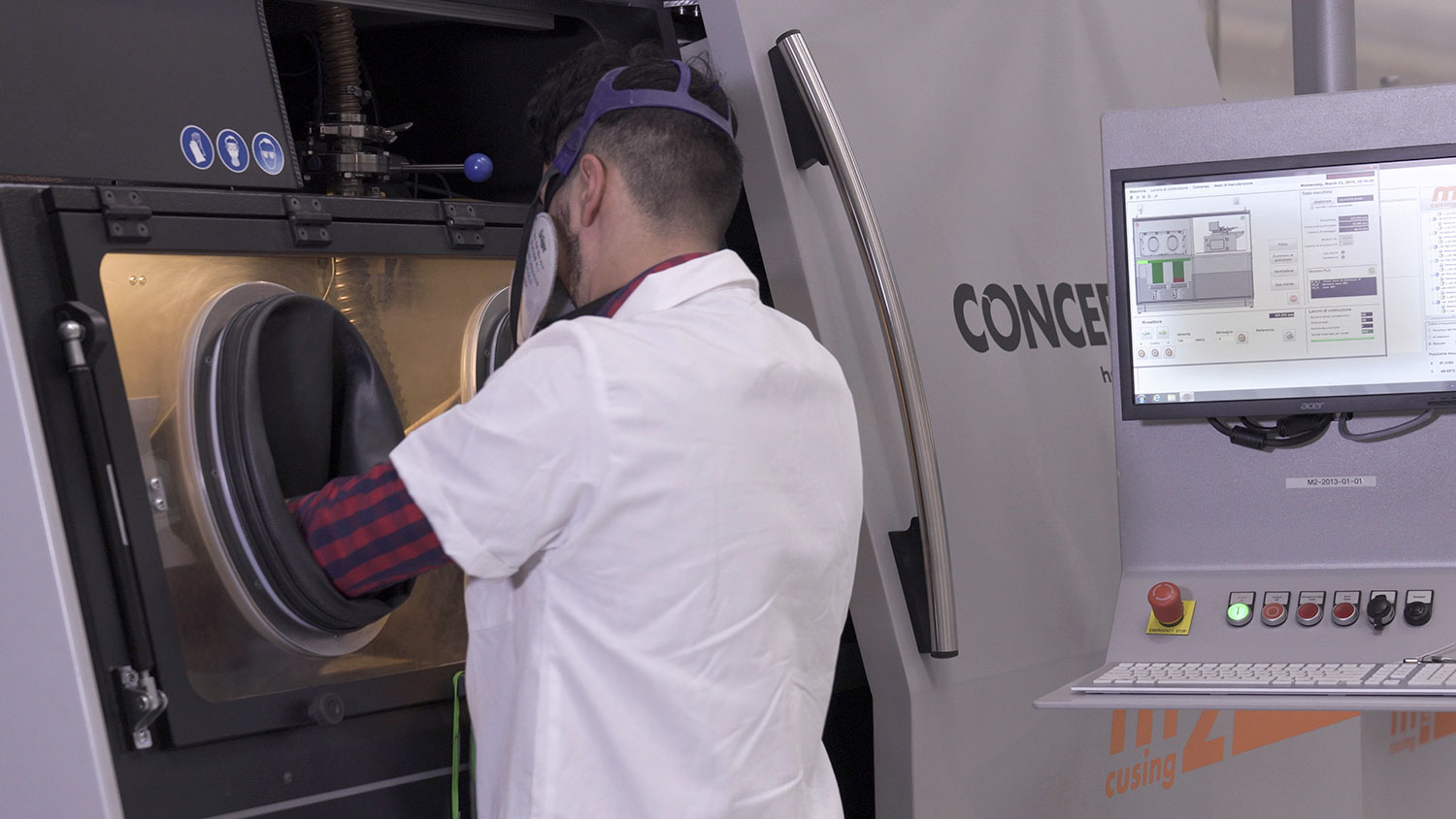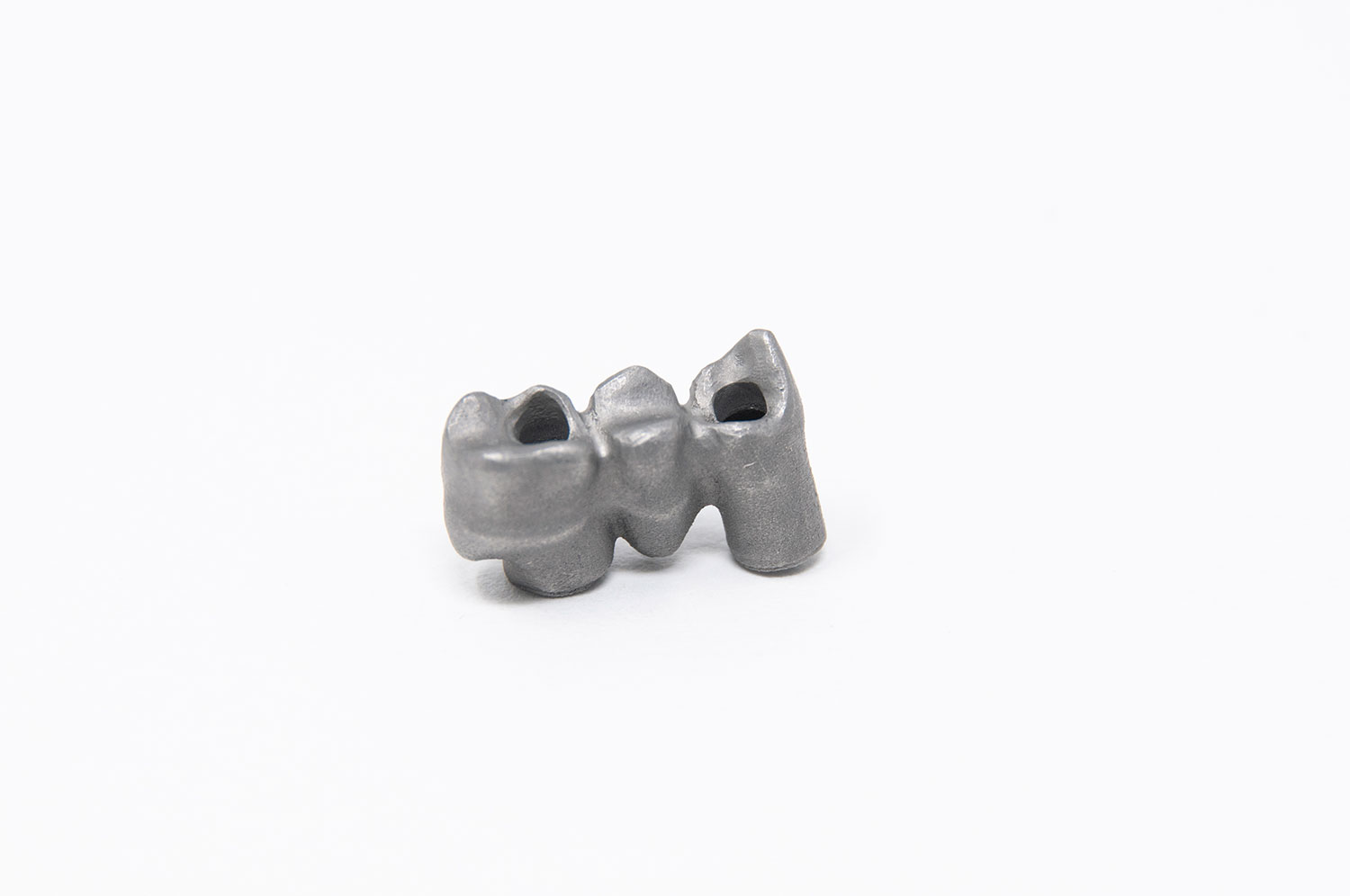-
PHONE
+39 0522 964949 -
PRICE LIST
Ask for the price list
Partial edentulism, namely the lack of one or more teeth, can be solved by using mobile or stationary prosthetic solutions, or sometimes a combination of the two.
Compared to mobile prosthesis, the bridge on natural abutments and the bridge on abutments or implants guarantee comfort, quality and esthetic results, restoring the chewing function and also a very natural appearance, thanks to the absence of attachments and hooks. The prosthesis is also durable and reliable.

The bridge over implants and abutments typically requires a greater amount of material: used in the absence of the natural tooth, often with recession of the mucosa, these solutions involve a greater vertical size of the work, affecting not only the amount of material, but also the printing time.
Unlike the bridge on natural abutments, prosthesis on implants does not require intervening on natural teeth close to the missing elements.
From a strictly production point of view, the realization of this type of prosthesis, which features through-holes, requires special care and greater processing for finishing, especially in case of particularly angled holes or in the absence of parallelism.

Preparation ▶ Sintering ▶ Stabilization ▶ Finishing
In the case of a “classic” bridge, which does not require holes and abutments, the process is standardized and generally does not present any particular critical issues.
Instead, on a system that provides abutment and screw passage, there are specific elements to be evaluated for each individual case. Consider, for example, the position of the support pins that can be placed even in the internal areas and, therefore, require special attention to obtain a precise structure. This necessarily implies longer working times. In this case, in addition, there are frequent mesh errors that need to be resolved before machining.
Often, once the file is uploaded to the virtual worktable, there are errors in the mesh that prevent the software from reproducing the details correctly (for example, some holes can be closed): our specialist dental technicians directly deal with solving these defects before machining.
Once the preparation phase has been completed, the prosthesis is made by sintering, both for the bridge on natural abutments and for the bridge over implants and abutments.
Before removing the structures from the plate, they are stabilized with a heat treatment in a special furnace, also creating an initial oxidation of the pieces. This oxidation will be treated before delivery to the laboratory so as to ensure that the alloy is stabilized and not subject to distortion.
With the finishing process all pins are removed, while their insertions on the structure are treated at the surface level to avoid changes or structural damage; especially on thin structures, a trace of pin insertion may still remain, not to be confused with a sign of porosity of the material. It is recommended in any case to design structures with a thickness of at least 5 tenths.

Compared to solid material machining, or by subtraction, the use of laser melting technology for bridges and bridges over implants and abutments is advantageous in terms of cost and manufacturing time, while ensuring the same quality. However, it is important to note that laser melting requires rotational connections that allow implants to be passivated by creating a tension-free structure on the t-base.
In fact, laser melting, working by addition, creates layers that can generate friction and, therefore, is not suitable for making anti-rotational connections. Structures that provide for such a feature must be made from solid material.
© Copyright 2021. All Rights Reserved. Proxera S.r.l. - Via Marchesi, 1 - 42022 Boretto (RE)
C.F. / P.IVA / Reg. Imp. RE 02741880351- R.E.A. 309389- Cap. Soc. € 30.000,00 i.v.a.
Information on the processing of personal data | General terms of sales | Cookies Policy